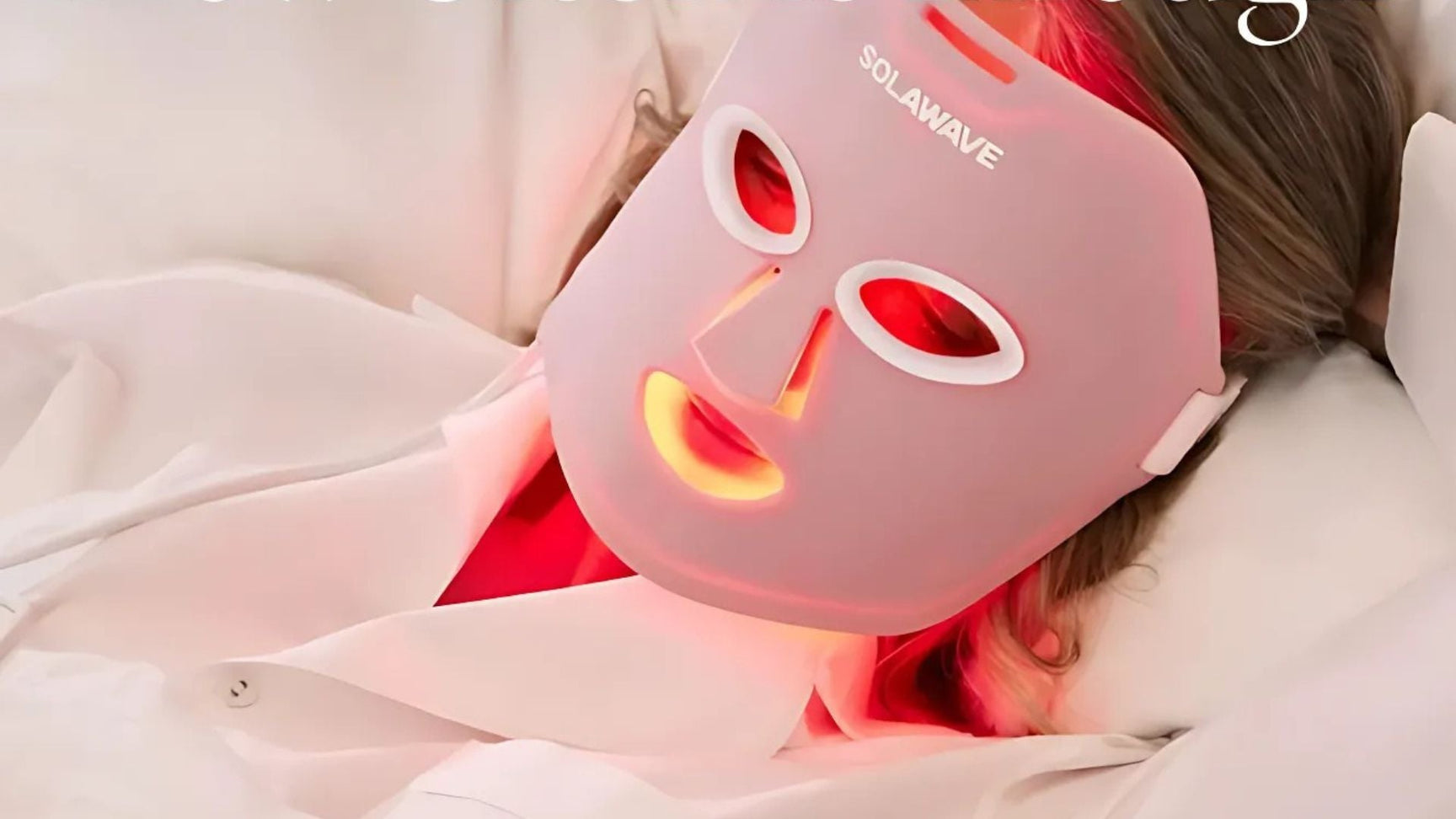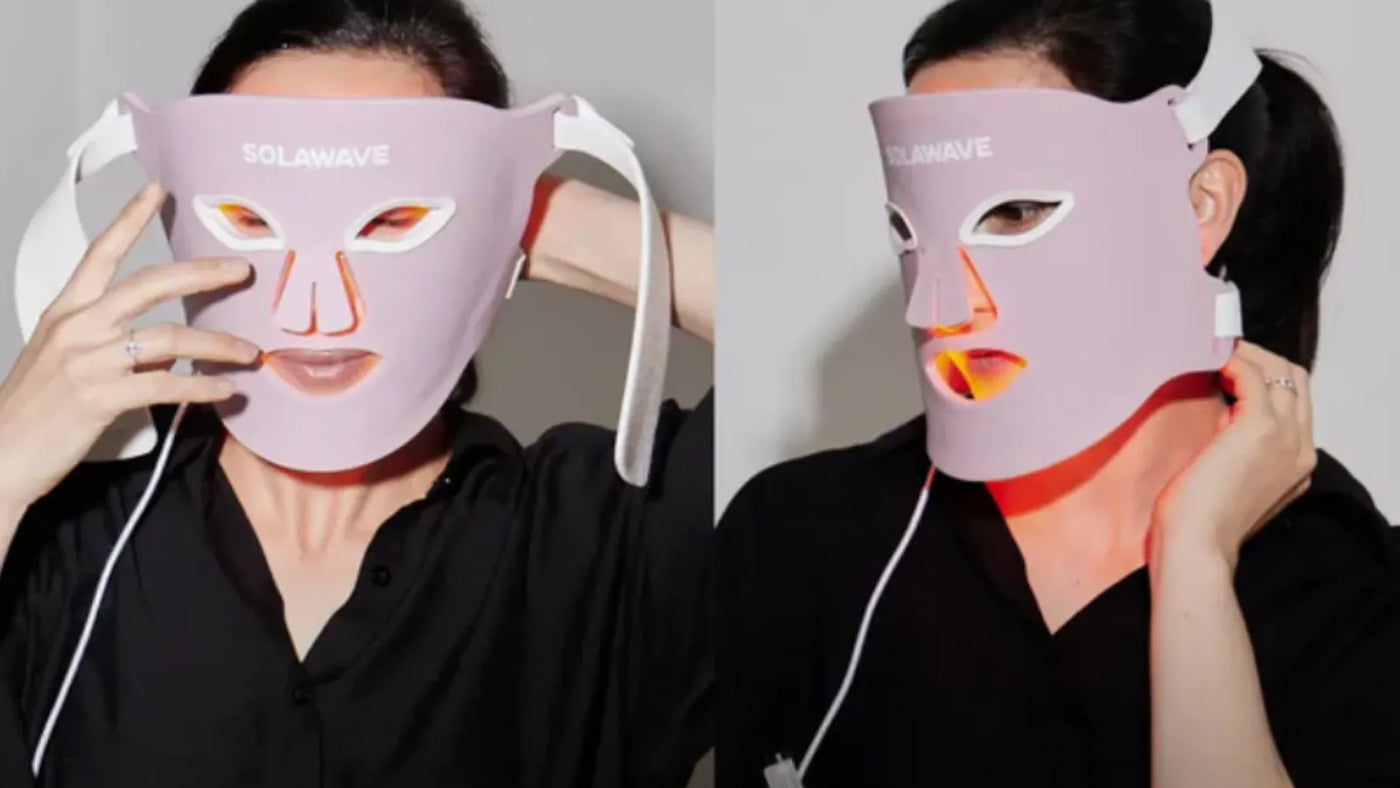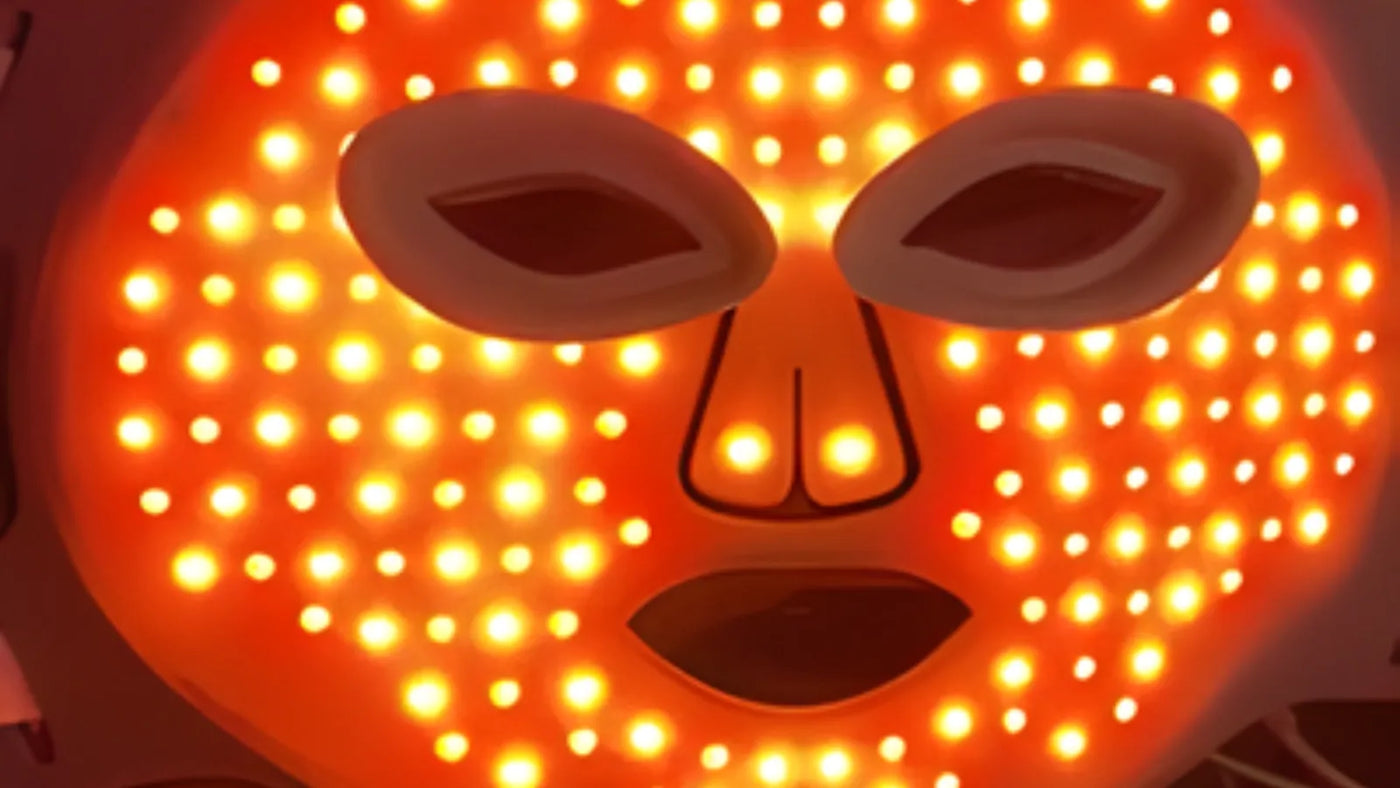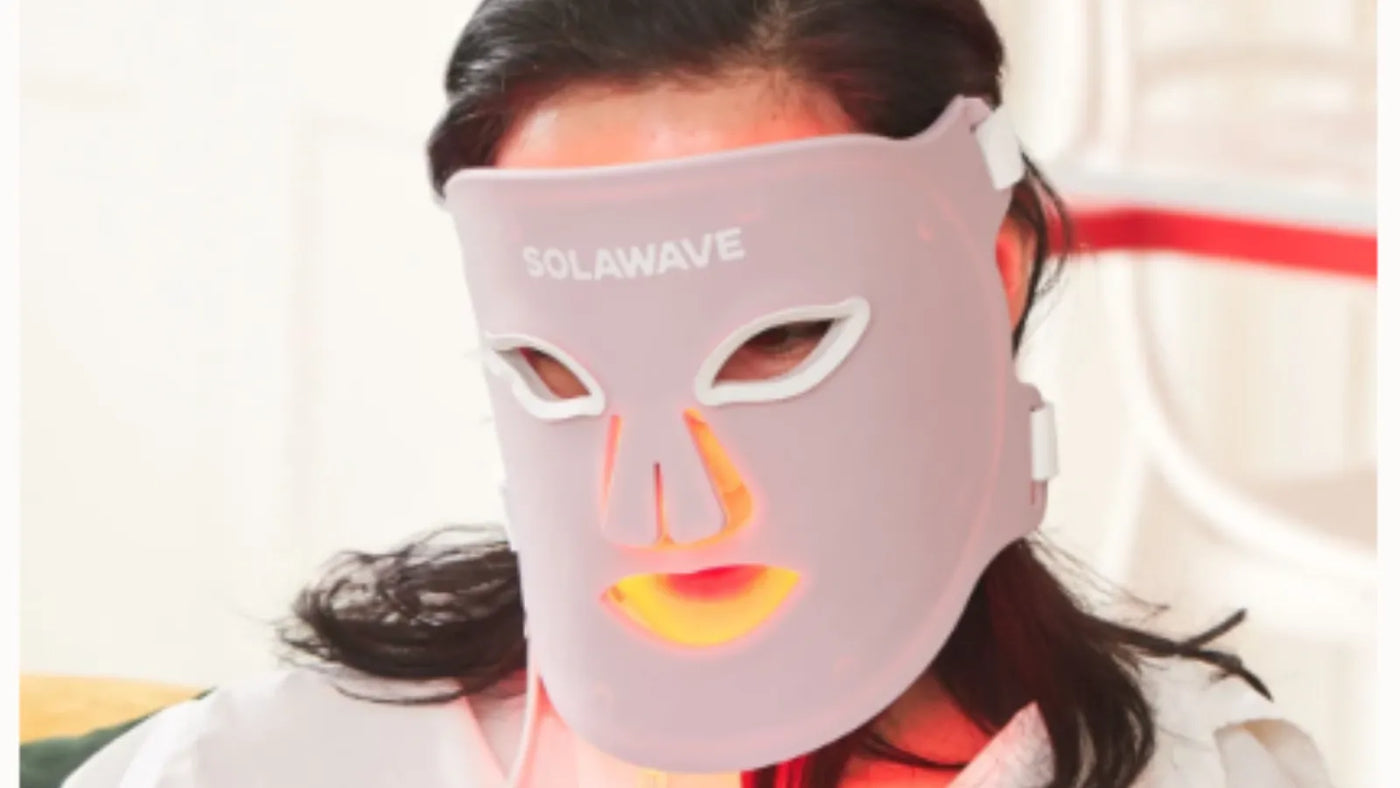

Are there any side effects from using the red light therapy mask for too long?
Red light therapy has become a go-to for many seeking to rejuvenate their skin, and for good reason. It's a gentle, non-invasive treatment celebrated for its ability to reduce the appearance of wrinkles and promote a more youthful glow. But with any popular treatment, questions about safety and usage are bound to arise. You might be wondering, are there any red light therapy mask side effects? It's a valid question, and understanding the nuances of this technology is key to getting the best results. While red light therapy is widely considered safe, it's important to know the potential outcomes of using it for too long.
Red Light Therapy: Understanding the Basics
At its core, red light therapy is a treatment that uses low-level wavelengths of red light to penetrate the skin. This approach, first studied by NASA to grow plants in space, uses specific light wavelengths to interact with the body on a cellular level. The light is absorbed by skin cells, which is thought to stimulate mitochondria (the powerhouses of the cells) to produce more energy. This boost in cellular energy can help with cell repair and rejuvenation, leading to benefits like improved skin firmness and a reduction in fine lines. At-home devices, like the Solawave Red Light Therapy Mask, use this technology to bring the benefits of red light therapy into your home. While the benefits are numerous, this article will focus on the potential negative effects of not following recommended usage guidelines.
Can You Overdo Red Light Therapy?
This brings us to the main question: can you have too much red light therapy? The short answer is yes, it is possible to overdo it. The effectiveness of red light therapy is related to the dose, which includes the duration, intensity, and frequency of your sessions. Exceeding the recommended usage doesn't necessarily lead to better or faster results and can, in some cases, lead to unwanted effects or even diminish the therapy's benefits. This is because cells can become oversaturated with light, causing a temporary decline in energy production, which is the opposite of the intended effect.
Potential Red Light Therapy Dangers
While red light therapy dangers are uncommon, especially with at-home devices, it's good to be aware of the potential risks associated with overuse. Most at-home devices are designed with safety in mind, but exceeding the manufacturer's instructions can lead to issues.
- Skin Irritation: The most common issue from overdoing red light therapy is temporary skin redness or irritation. This is often mild and subsides quickly as the skin adjusts.
- Eye Sensitivity: Although many at-home devices are tested for eye safety, direct, prolonged exposure to the light can cause discomfort or strain. It's always best to use the built-in eye protection or simply keep your eyes closed during a session. The Solawave red light therapy eye mask, for example, is specifically designed for the delicate eye area with safety in mind.
- Burns and Blisters: In very rare cases, excessive use, such as using a device for much longer than recommended or if the device malfunctions—can cause burns or blisters. This highlights the importance of choosing a device from a trusted brand.
Following the instructions provided with your device is the best way to avoid these issues. For example, Solawave's masks are designed for 10-minute sessions, a duration determined for optimal safety and efficacy.
Are There Infrared Therapy Side Effects?
Some devices combine red light with infrared light. It’s helpful to understand the difference. Red light is visible, while infrared light is not. Infrared light penetrates deeper into the skin than red light, reaching muscles and tissues. The potential infrared therapy side effects are similar to those of red light and can include thermal burns and dehydration from overheating if used improperly. Many at-home masks, including Solawave's, use a combination of red and near-infrared light to maximize benefits for both the skin's surface and deeper layers. As with red light, the key to safety is moderation and following guidelines.
LED Light Therapy Dangers: What to Watch Out For
Most at-home red light therapy masks use Light Emitting Diodes (LEDs) to deliver the light. The LED light therapy dangers are minimal because these devices have much less power than the lasers used in clinical settings, making them unlikely to burn your skin. The primary concern is with unverified products. It's important to choose a device from a reputable brand that has been FDA-cleared. At-home options like Solawave are FDA-cleared, making them safe and reliable for regular use. At the same time, there are more brands launching without FDA clearance and therefore murky safety protocols, so it's important to purchase something that's FDA-cleared.
Red Light Therapy Side Effects on the Face
When using a red light therapy for face mask, any potential side effects will, of course, appear on your face. These can include:
- Temporary Redness: A slight flush after a session is normal and usually due to increased blood flow to the area. It should fade within a few hours.
- Dryness: Some people might experience dryness, especially with frequent use. Following up your session with a hydrating product, like a Lightboost Face and Neck Cream, can help counteract this.
- Initial Breakouts: Occasionally, some people report a temporary increase in breakouts when they first start using red light therapy. This is sometimes attributed to the skin purging impurities as cellular activity increases, and it typically resolves as your skin adjusts to the treatment.
For those with pre-existing skin conditions, such as rosacea or eczema, it's always a good idea to chat with a dermatologist before starting a new skincare treatment.
Is Red Light Therapy Safe?
So, is red light therapy safe? Generally, yes. It is considered a low-risk treatment, especially when compared to other more invasive procedures. The therapy is gentle, non-invasive, and not associated with UV damage. The key to keeping it safe is to use the device as directed. Individual sensitivity can vary, so it's always wise to pay attention to how your skin responds and adjust your routine if needed.
Effects of Red Light Therapy: Balancing Benefits and Risks
The effects of red light therapy are overwhelmingly positive when the treatment is used correctly. It can lead to visibly firmer skin, a reduction in the appearance of fine lines, and an overall more radiant complexion. The risks are minimal and typically associated with overuse. By understanding both the benefits and the potential side effects, you can make an informed decision and enjoy what red light therapy has to offer. For those who want targeted treatment, a red light therapy wand can be a great option, allowing you to focus on specific areas of concern.
How Long Is Too Long? Understanding Red Light Mask Usage
A common question is about the ideal duration for using a red light mask. While this can vary between products, a typical session with an at-home mask is around 10 minutes. Going beyond the recommended time doesn't enhance the benefits and may increase the risk of side effects. Always refer to the manufacturer's instructions for your specific device. For instance, customers using Solawave's Red Light Therapy Face Mask are advised to stick to the 10-minute session length for the best and safest results.
Daily Use of a Red Light Therapy Mask: Is It Safe?
Many customers wonder if daily use of a red light therapy mask is safe. For many, consistent, short sessions are key to achieving the desired results. However, "daily" might not be necessary for everyone. Some research suggests that spacing sessions out, for example, every 72 hours, can be optimal for cellular processes. The best approach is to start with a few sessions a week and see how your skin reacts. Pay attention to any signs of sensitivity and adjust your frequency accordingly. Consistent sessions are more important than long or overly frequent ones. A weekly session isn't likely to give customers the results they're looking for; consistency is crucial.
Minimizing Red Light Therapy Side Effects
To get the most out of your red light therapy sessions while minimizing any potential red light therapy side effects, here are a few practical tips:
- Follow Instructions: This is the most important rule. Adhere to the recommended session duration and frequency.
- Start Slow: If you have sensitive skin, begin with shorter sessions or less frequent use to see how your skin tolerates the treatment.
- Protect Your Eyes: Even though at-home LED devices are less intense, it's a good practice to use the provided eye protection or keep your eyes closed during facial treatments.
- Keep it Clean: Make sure your device is clean before each use to prevent any skin irritation or breakouts.
- Moisturize: Hydrate your skin after each session to prevent dryness. Pairing your treatment with products from a dedicated skincare line designed to work with light therapy can enhance results. For example, using a Lightboost Niacinamide Face and Neck Serum can soothe and brighten the skin. For the eye area, a Lightboost Collagen Caffeine Eye Cream can help with puffiness.
For those using a wand device, it's important to use a conductive, water-based serum, like the Lightboost Red Light Therapy Hyaluronic Serum, to ensure the technologies work effectively.
When to Consult a Professional About Red Light Therapy
While this article provides general information, it is not a substitute for professional medical advice. If you experience any persistent or concerning adverse reactions, you should consult a dermatologist or healthcare professional. It is also recommended to seek professional guidance before starting red light therapy if you are pregnant or have a pre-existing skin or health condition. Your doctor can help you determine if red light therapy is the right choice for you.
Investing in your skin's health can be made more accessible, as many Solawave purchases may be eligible for coverage with FSA/HSA funds, making it a cost-effective choice for your long-term skin health. You can browse all of our award-winning skincare tools to find the perfect fit for your routine.
A Focus on Science and Safety with Solawave
At Solawave, the mission is to make effective, science-backed skincare accessible. As a 30+ award-winning brand, Solawave integrates patented light therapy technologies into at-home rituals that are both effective and FDA-cleared. Loved by celebrities and recommended by estheticians and dermatologists, Solawave devices are designed for real results. Whether it's the Red Light Therapy Neck & Chest Rejuvenating Skincare Mask or the versatile skincare wands, each product is created to be a gentle, non-invasive, and valuable part of your routine.
Frequently Asked Questions
What happens if you overdo red light therapy?
Overusing red light therapy can potentially lead to skin irritation, redness, and sensitivity. In rare cases of extreme overuse, it could cause burns or blisters. It may also make the treatment less effective by oversaturating the cells.
How often should you use a red light therapy mask?
Most at-home masks are designed to be used 3-5 times per week for about 10 minutes per session. However, you should always follow the specific instructions provided by the manufacturer of your device for the best and safest results.
Is it safe to use red light therapy every day?
While many devices are safe for daily use, it's often recommended to start with a few sessions per week to see how your skin reacts. Some studies suggest spacing out treatments may be more effective for cellular regeneration. Consistency is more important than daily frequency.
Can red light therapy damage your eyes?
-
While the risk from at-home LED devices is low, direct and prolonged exposure could cause eye strain or discomfort.
-
It is always recommended to use the provided eye protection or keep your eyes closed during treatment for maximum safety.
Does red light therapy have any long-term side effects?
-
Red light therapy is generally considered safe for long-term use when used as directed and does not use damaging UV light.
-
There is currently no scientific evidence to suggest that red light therapy causes long-term negative side effects.





















